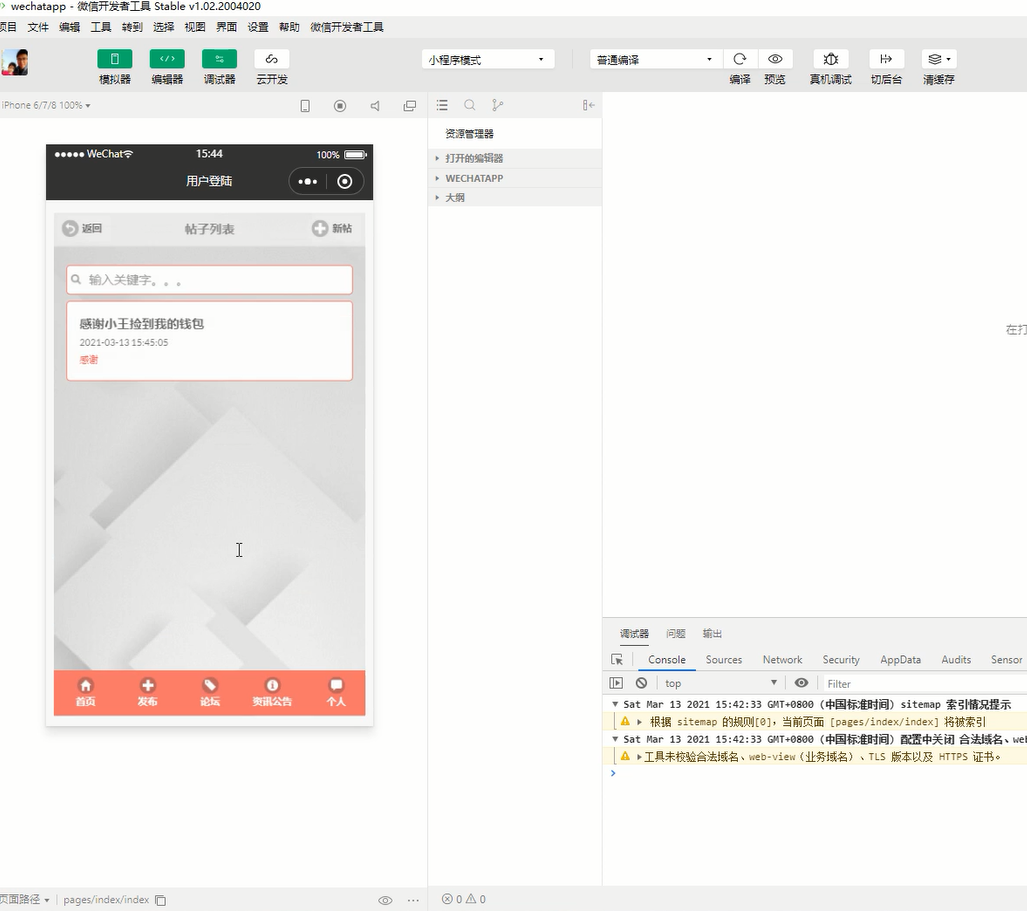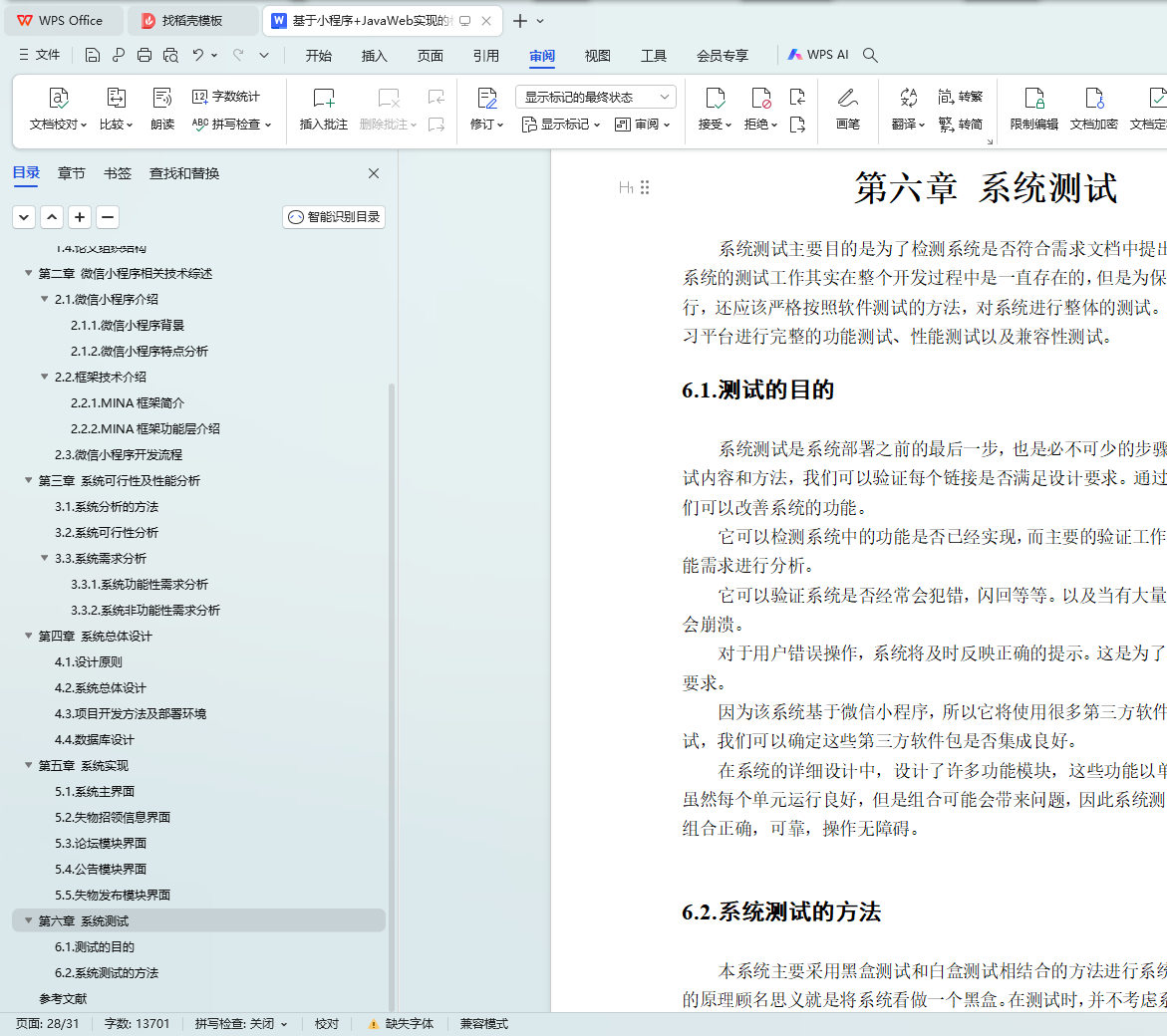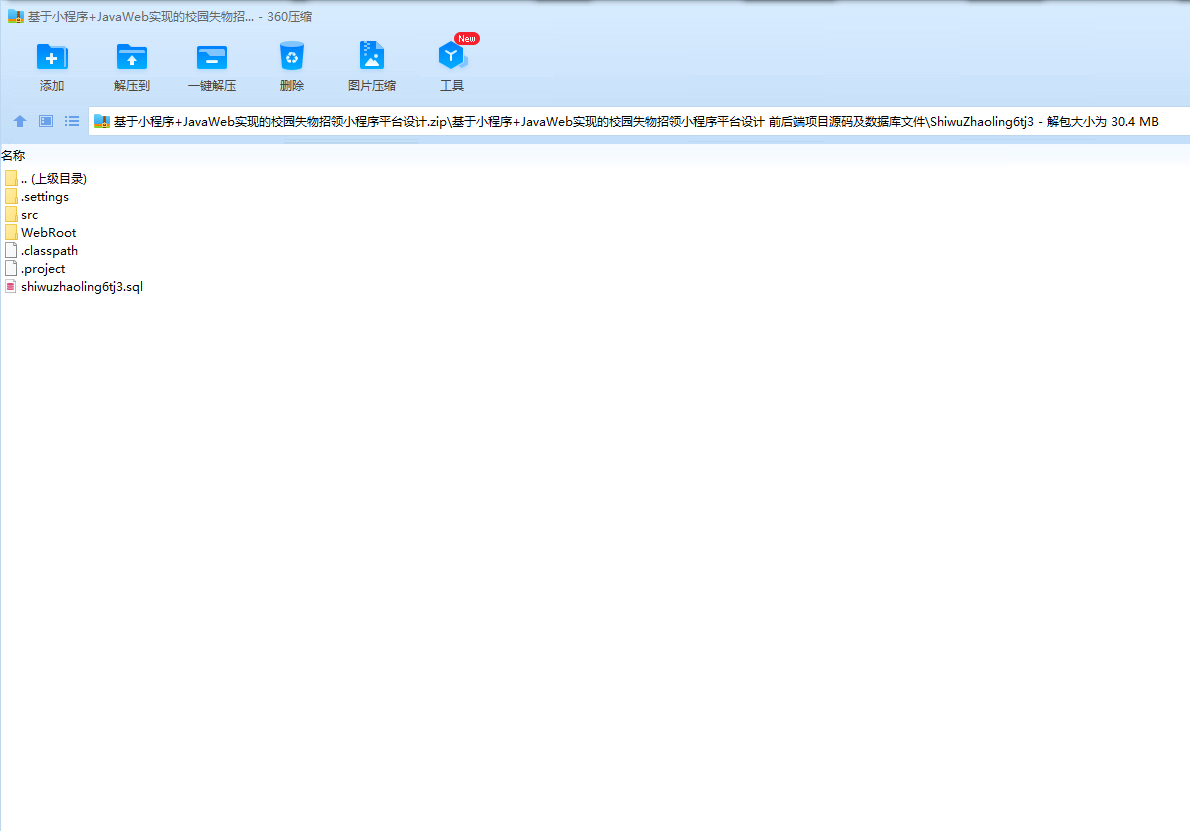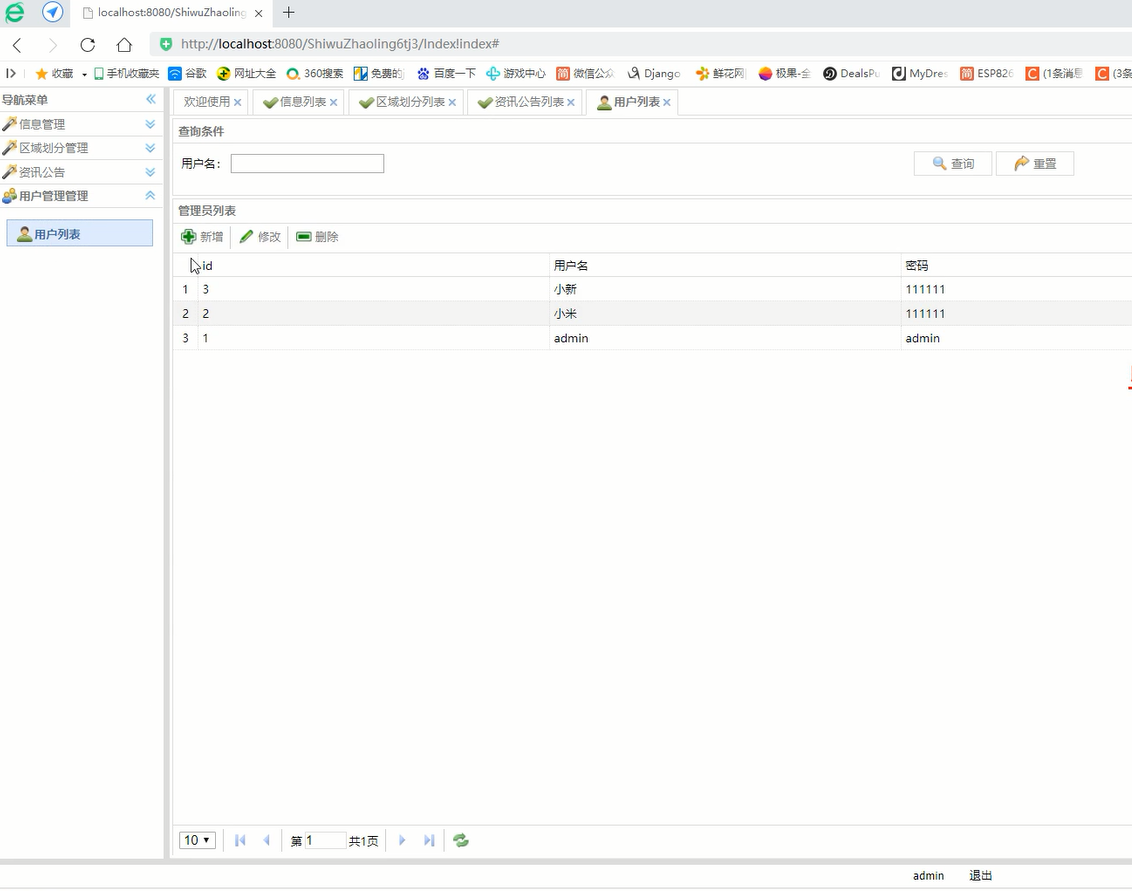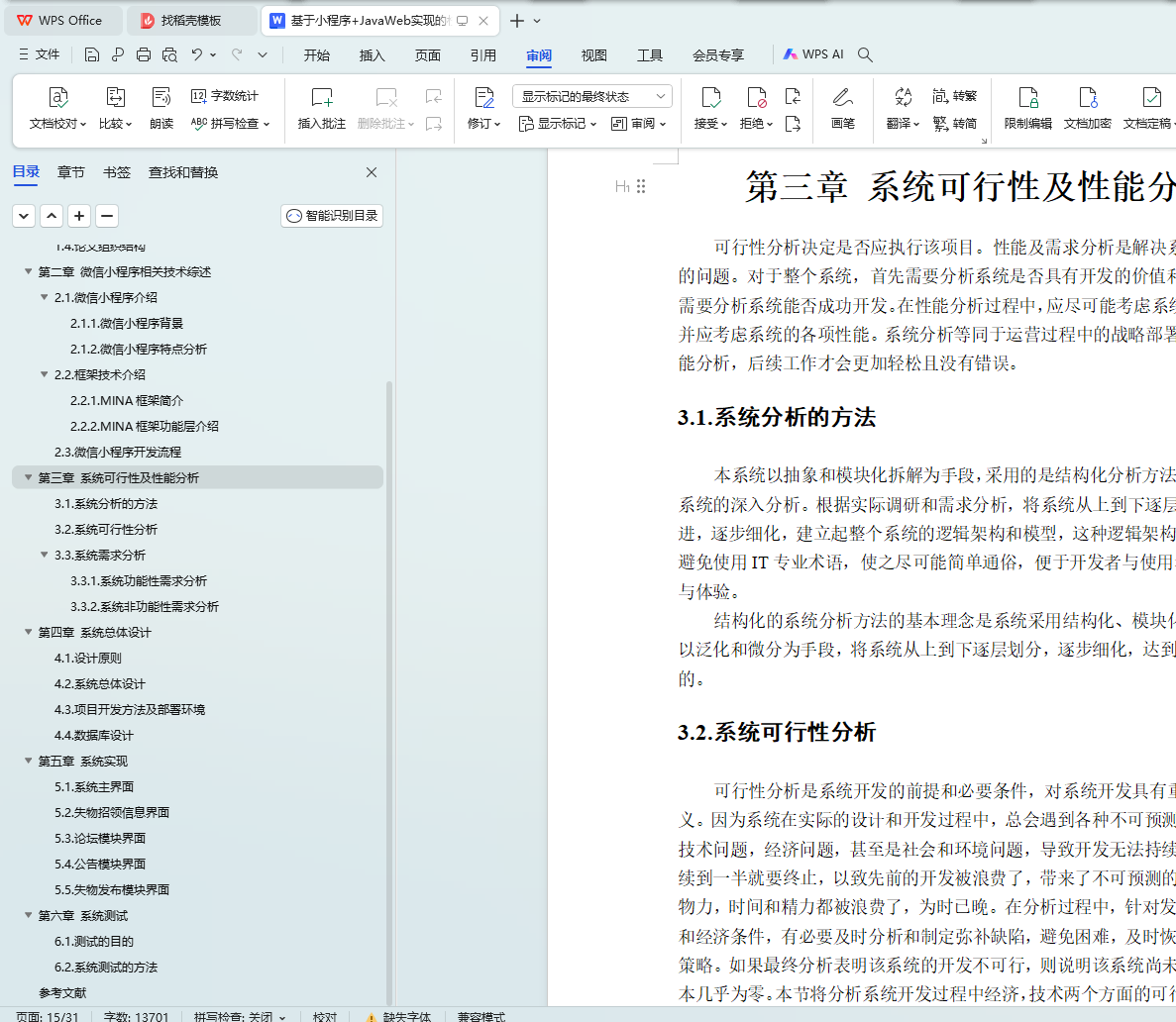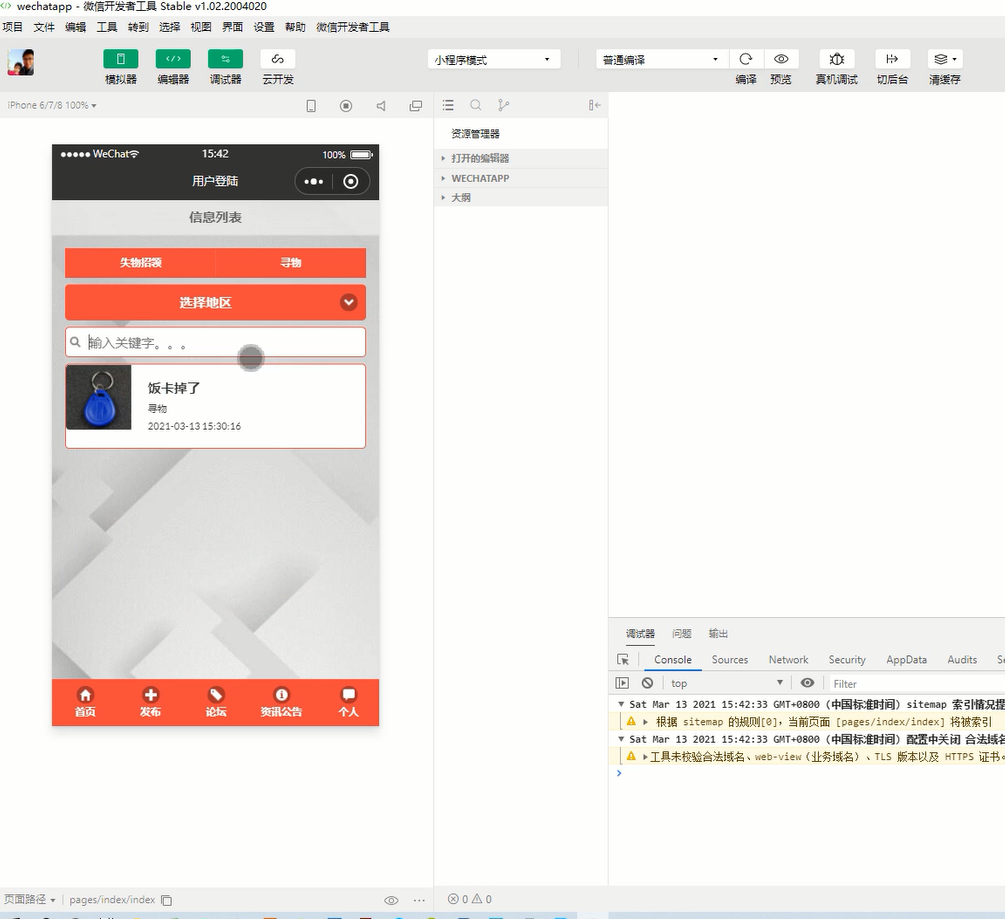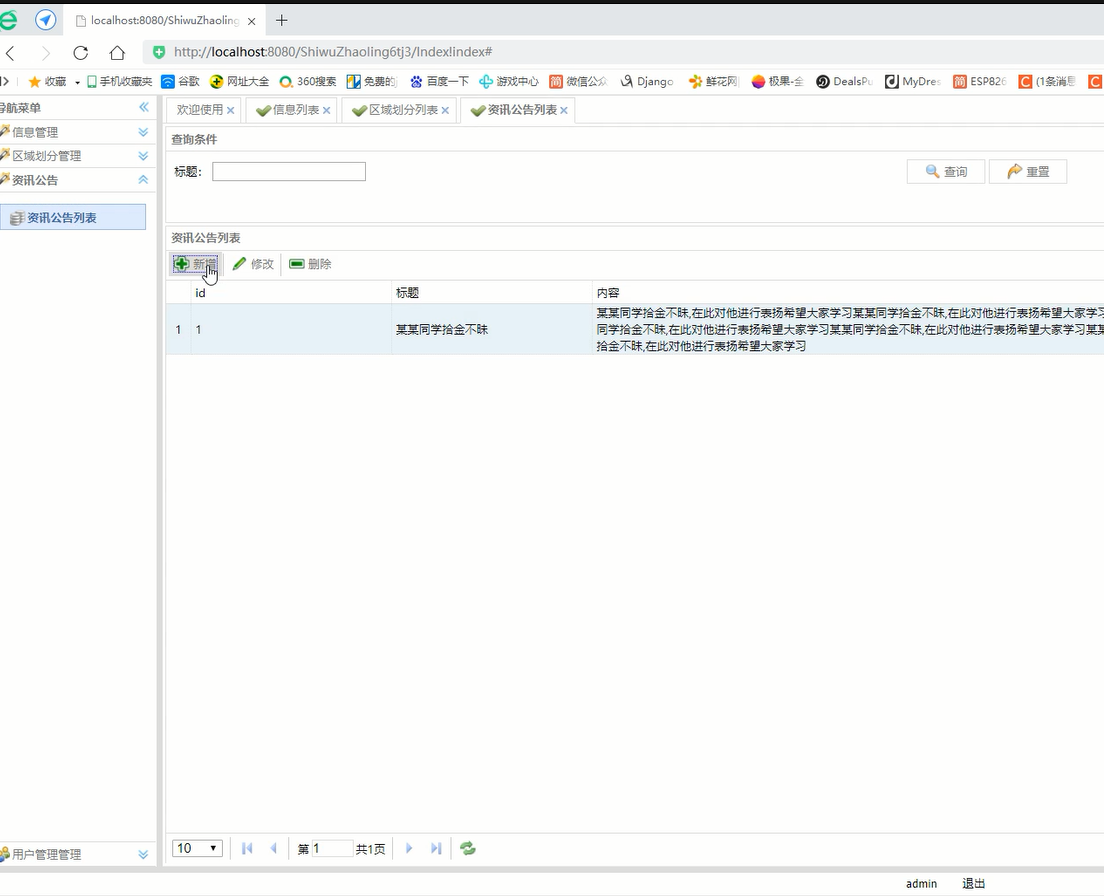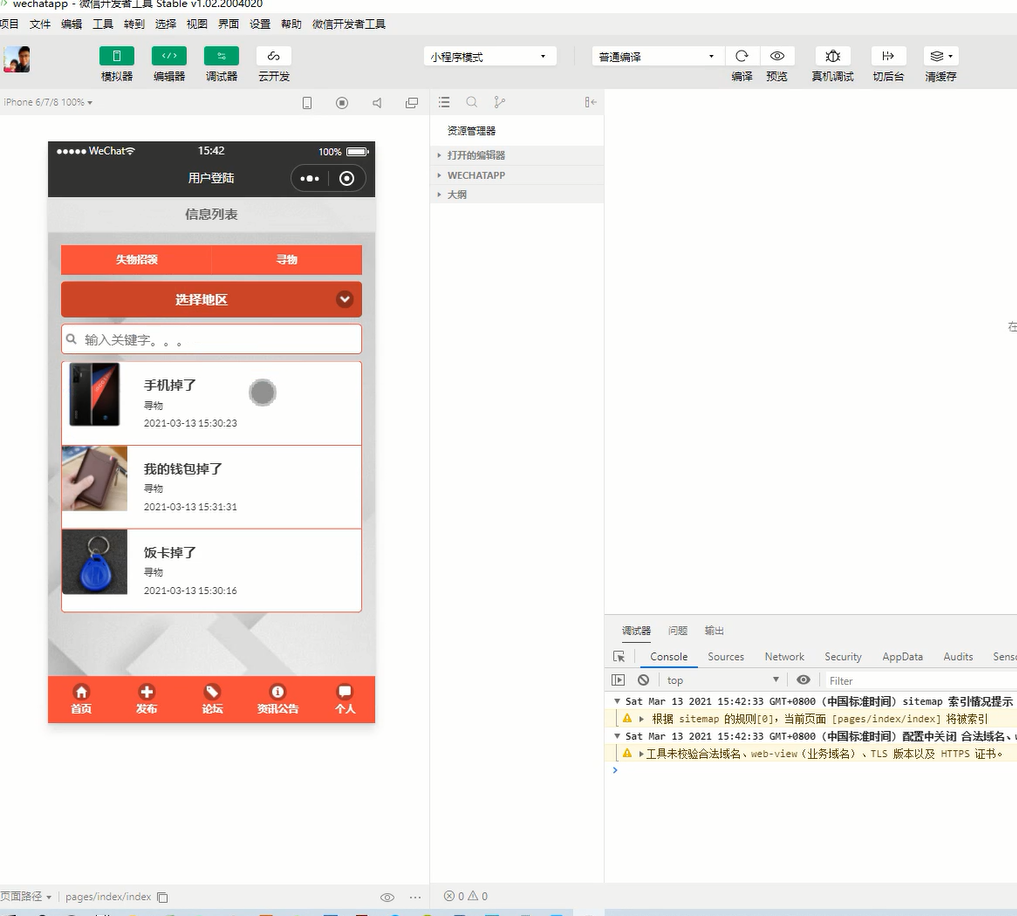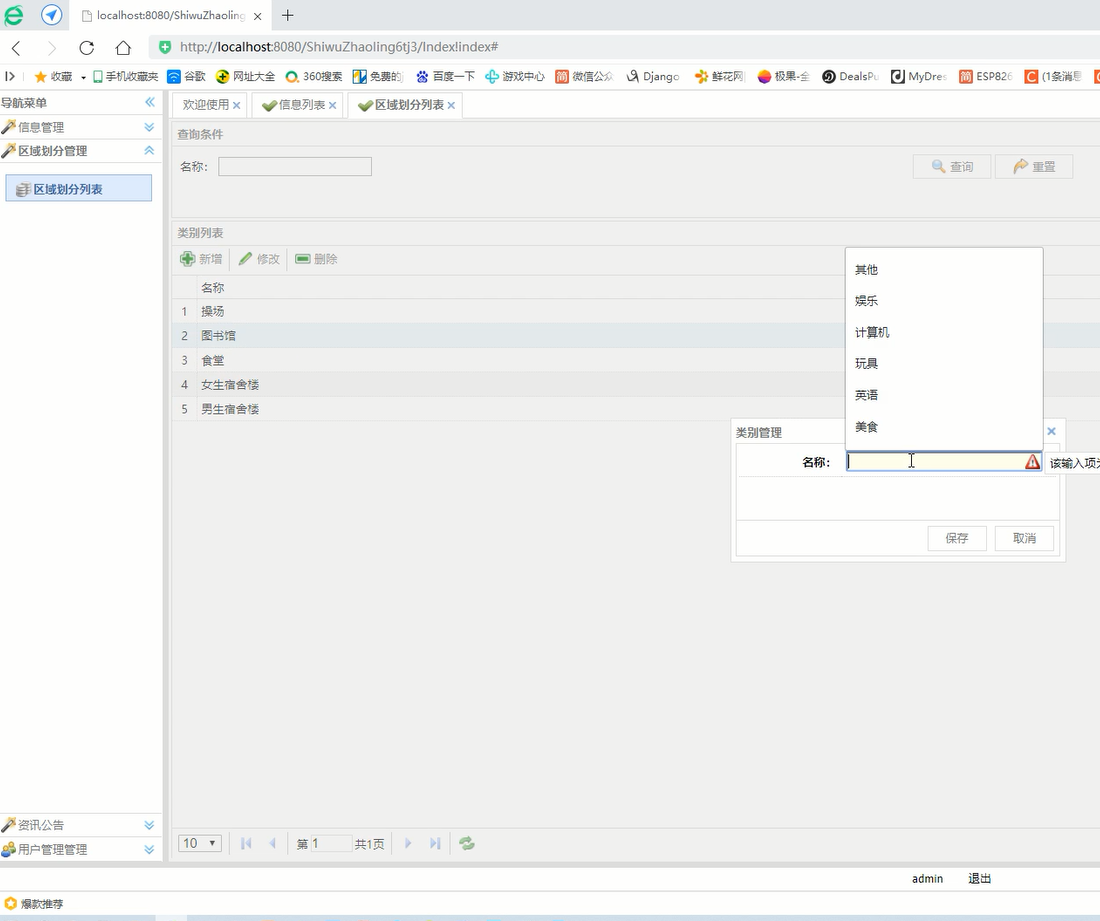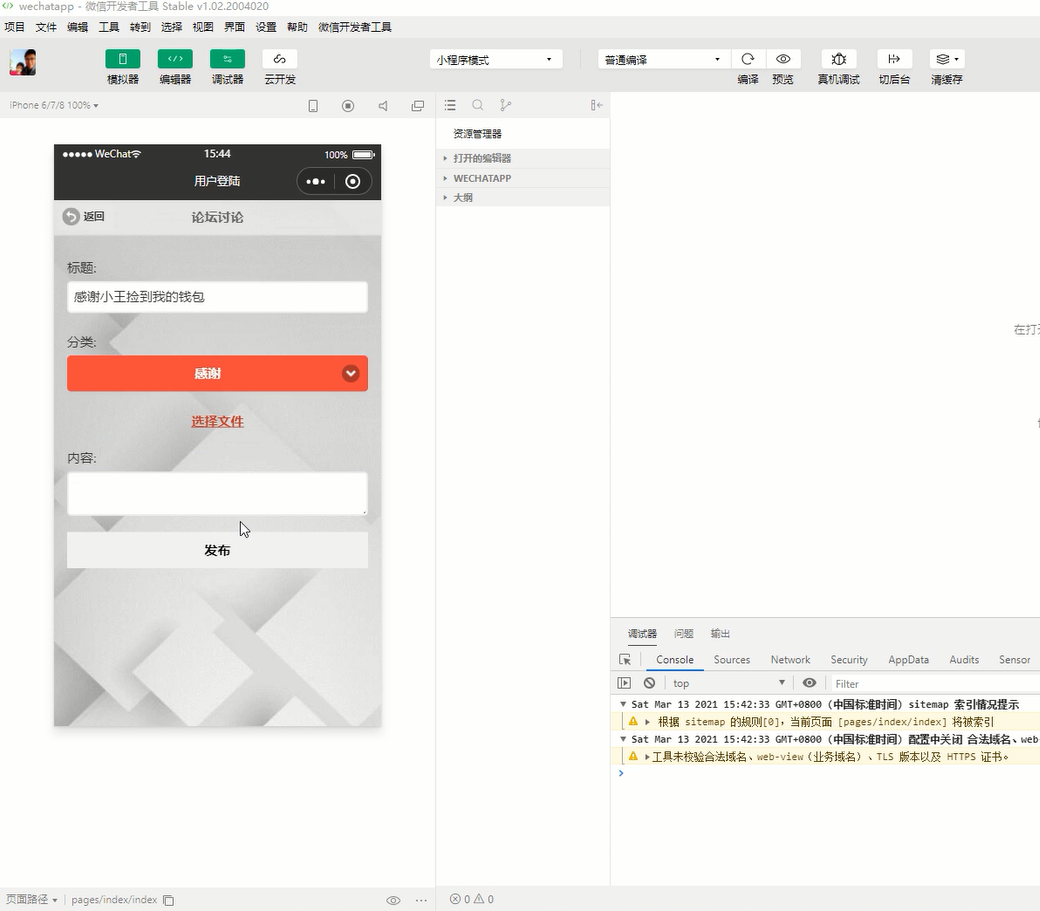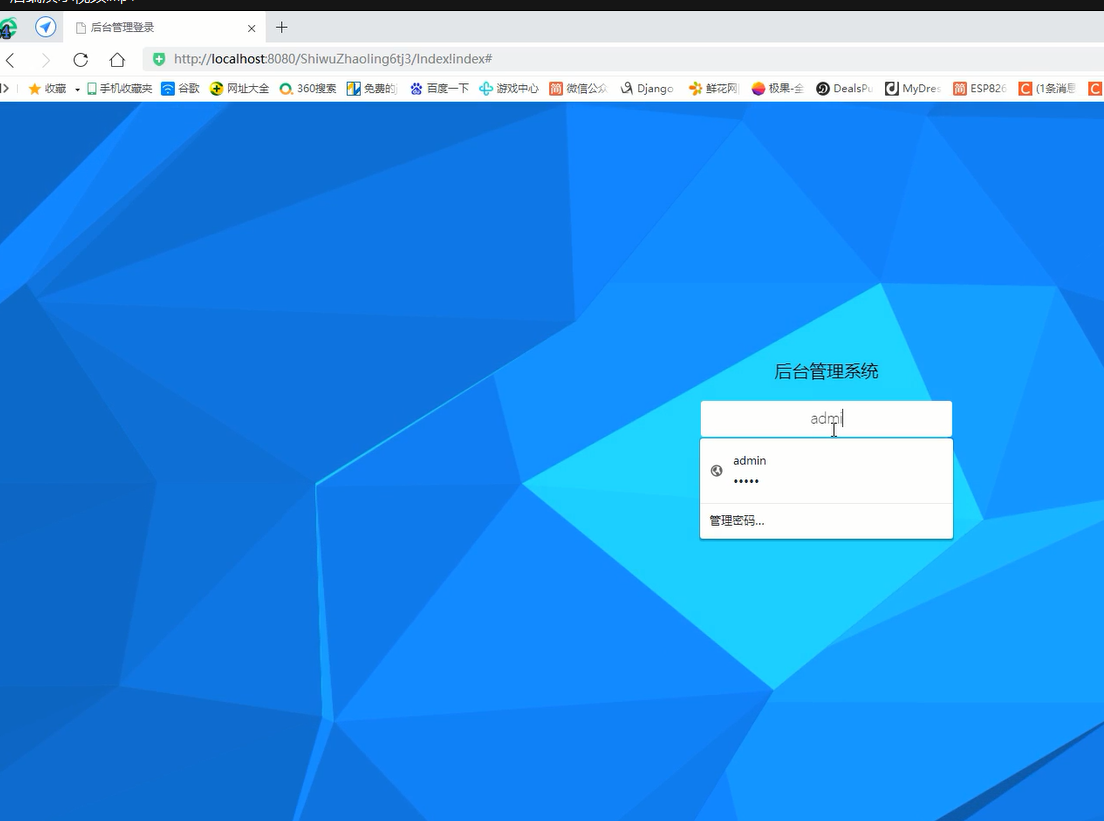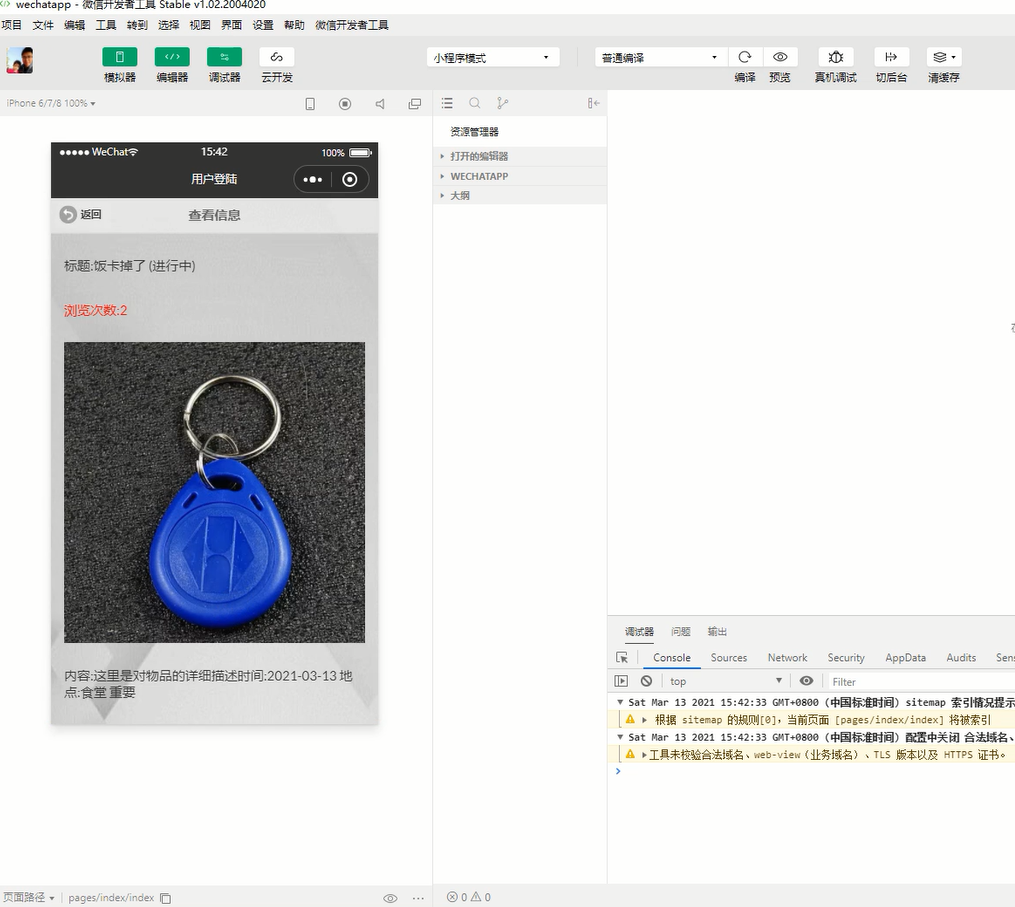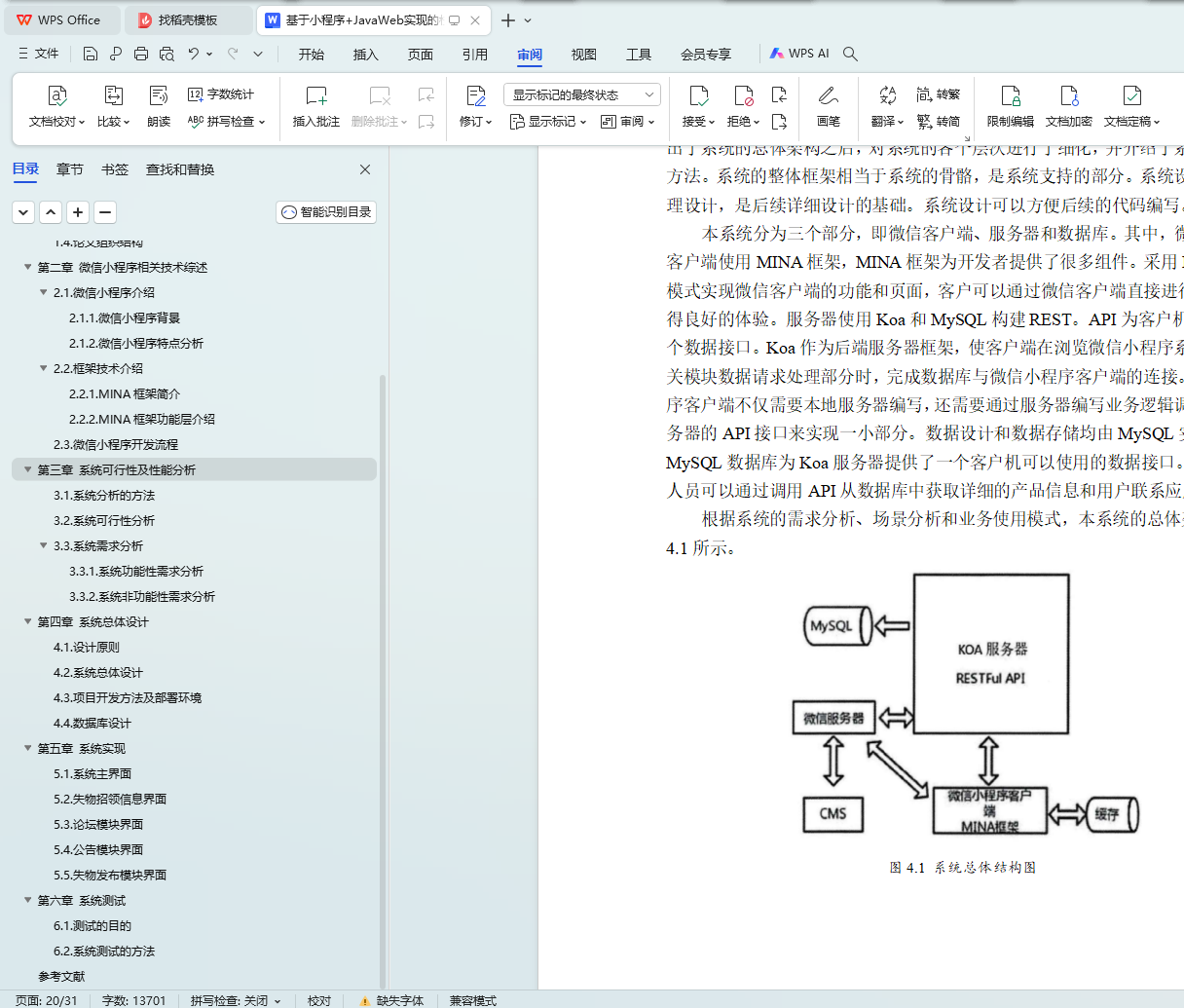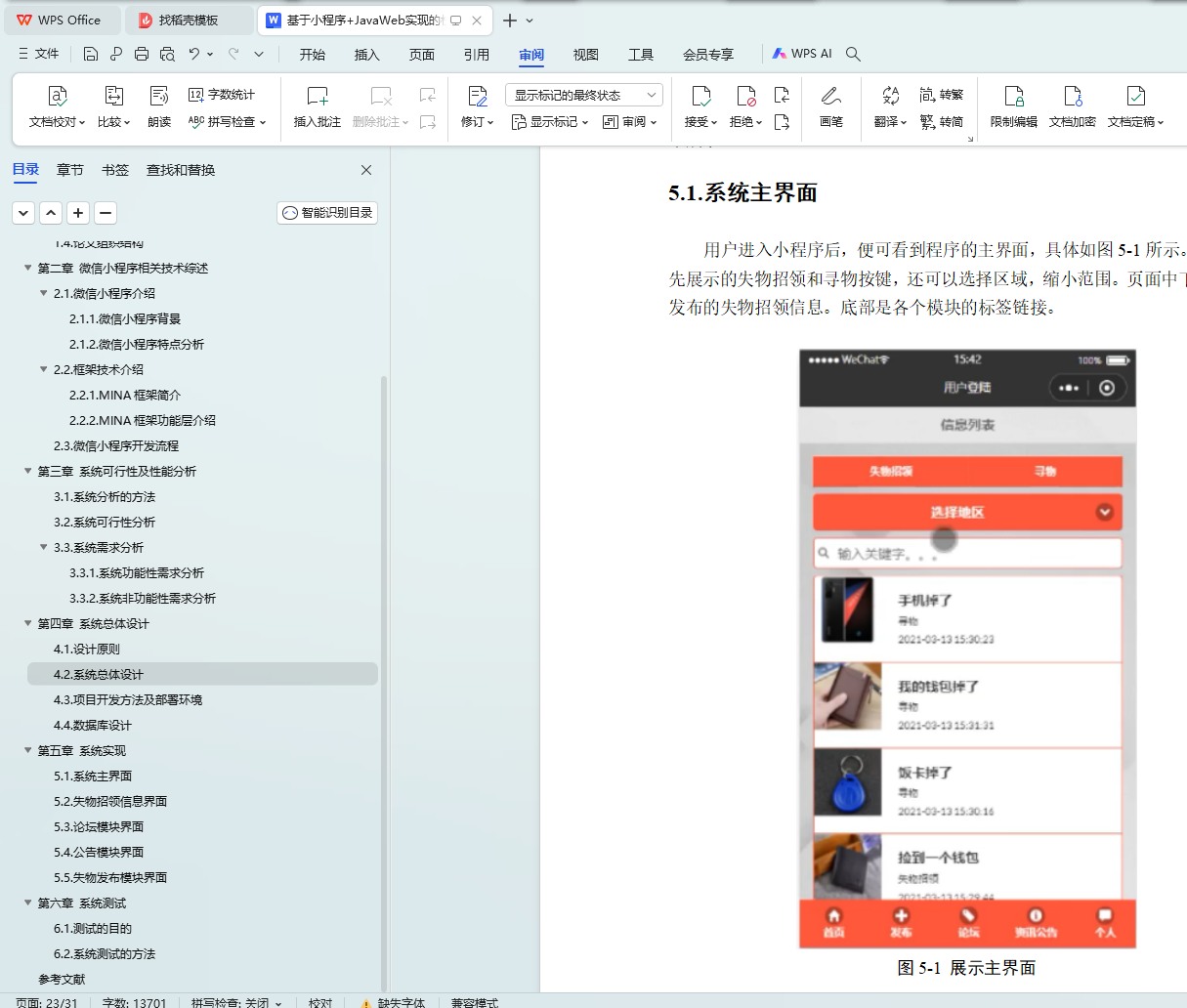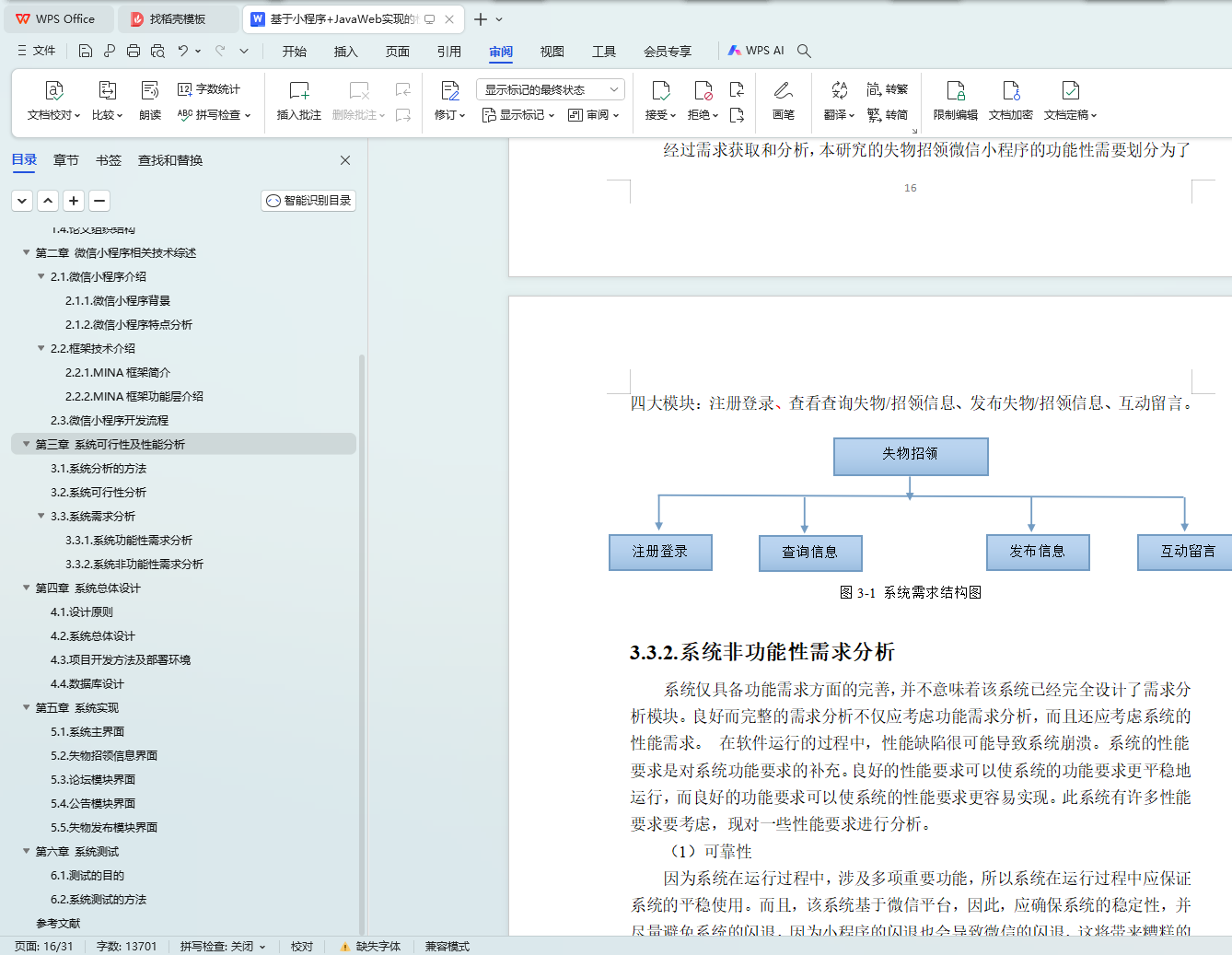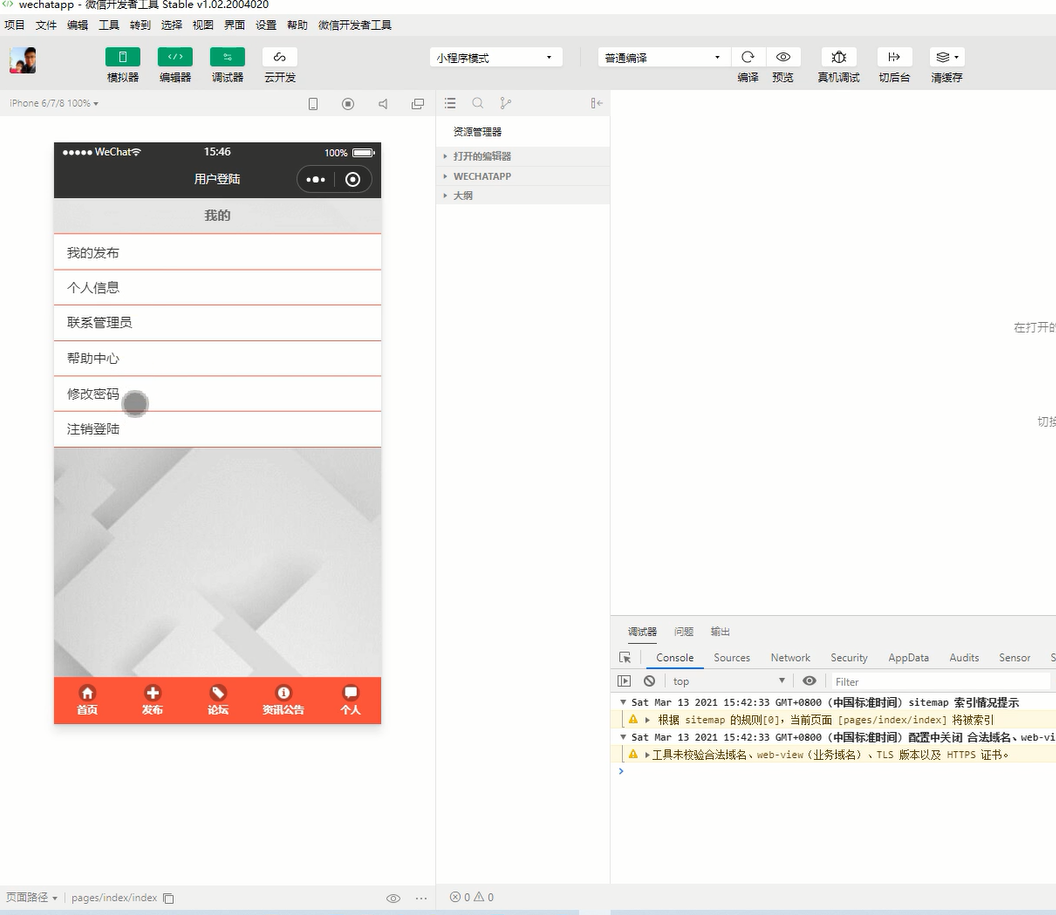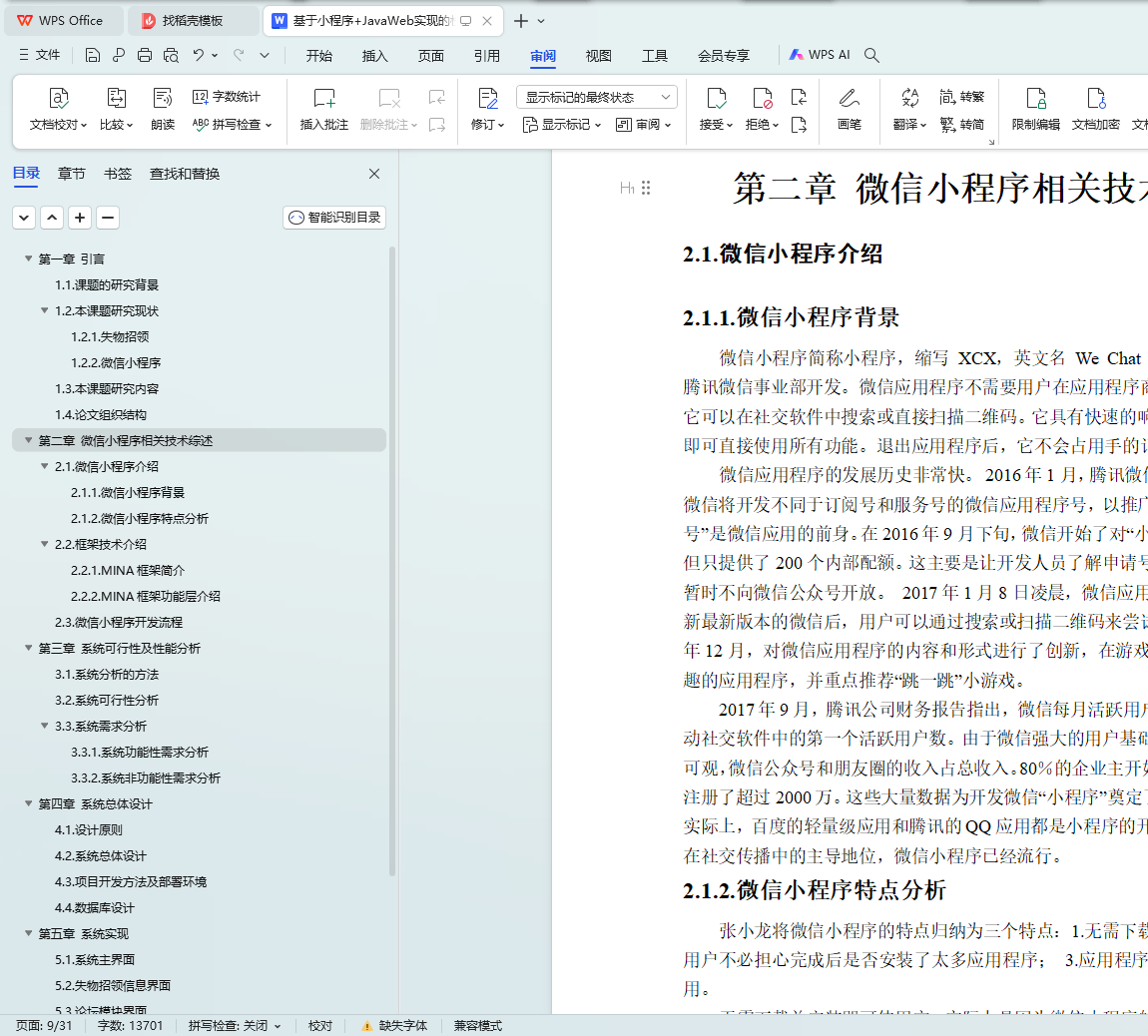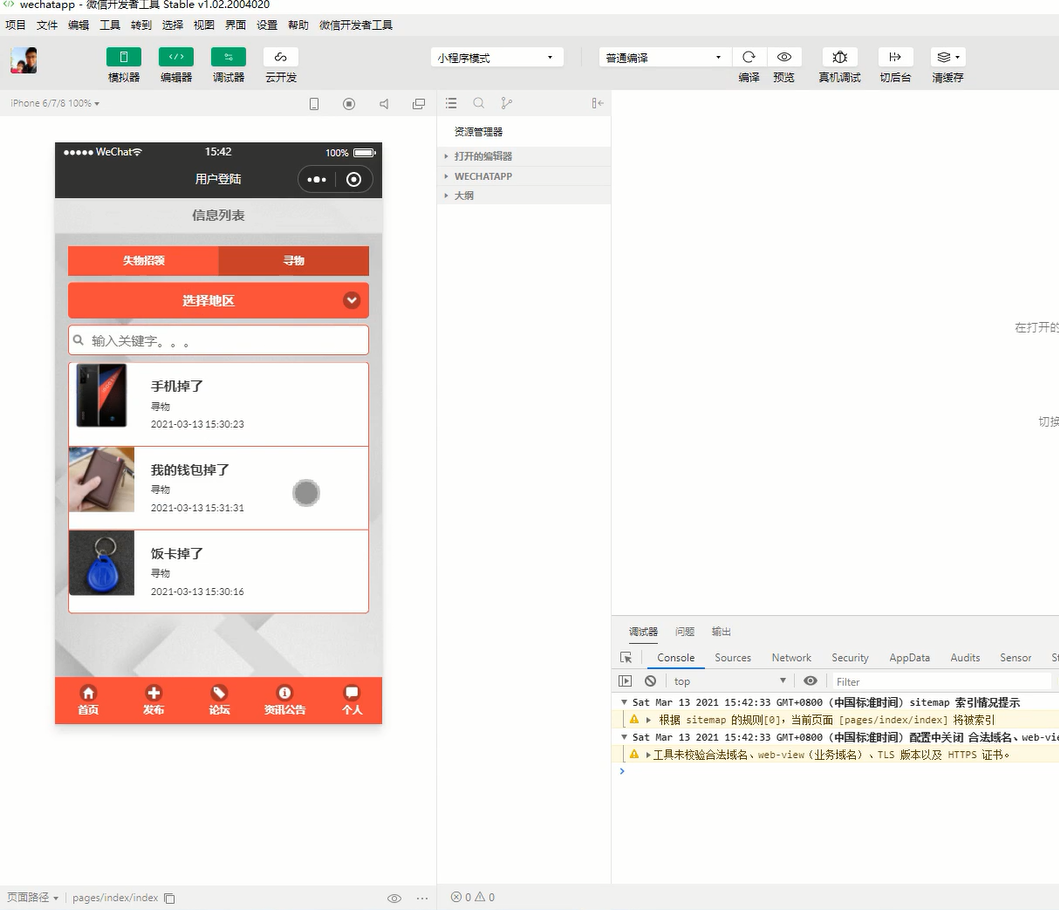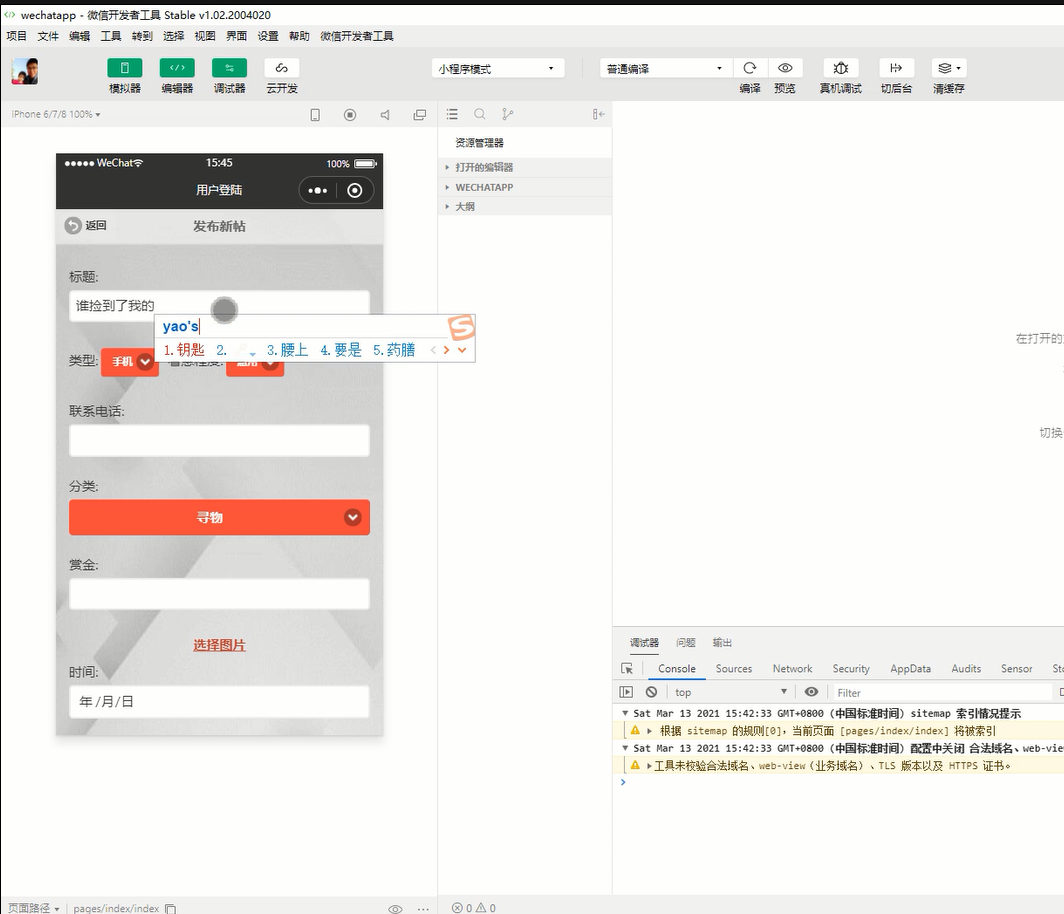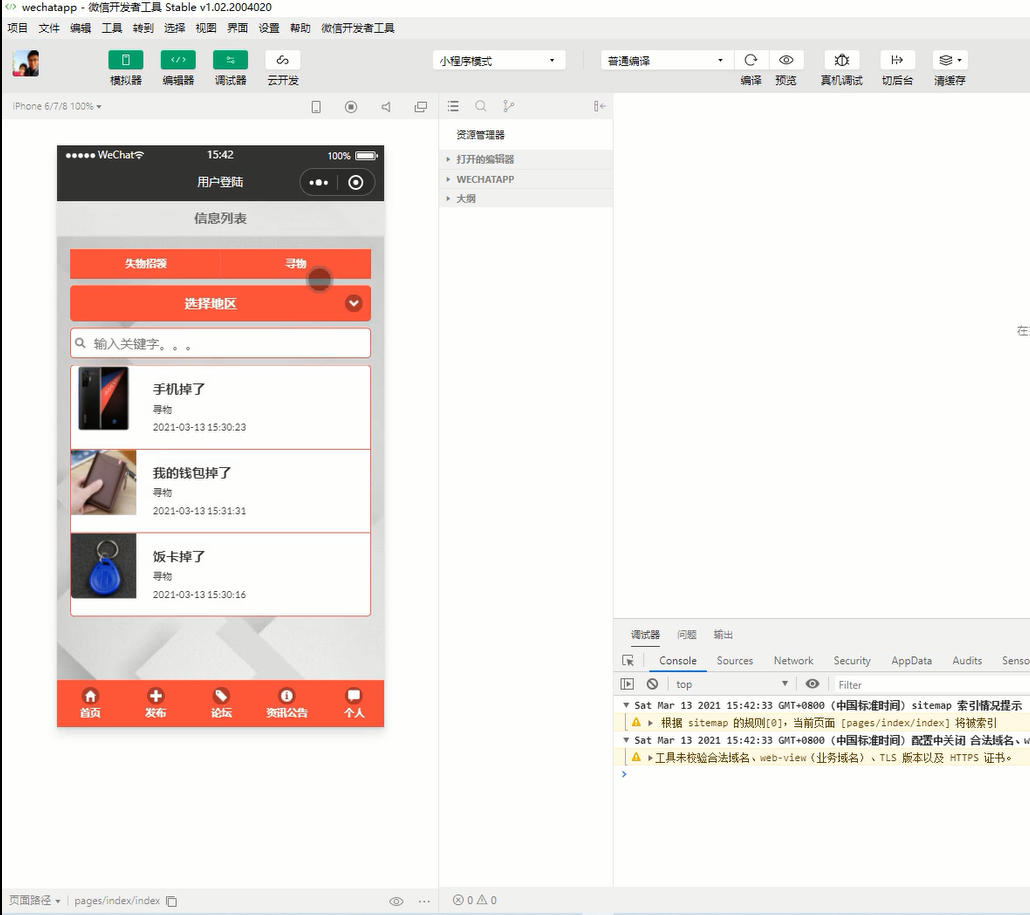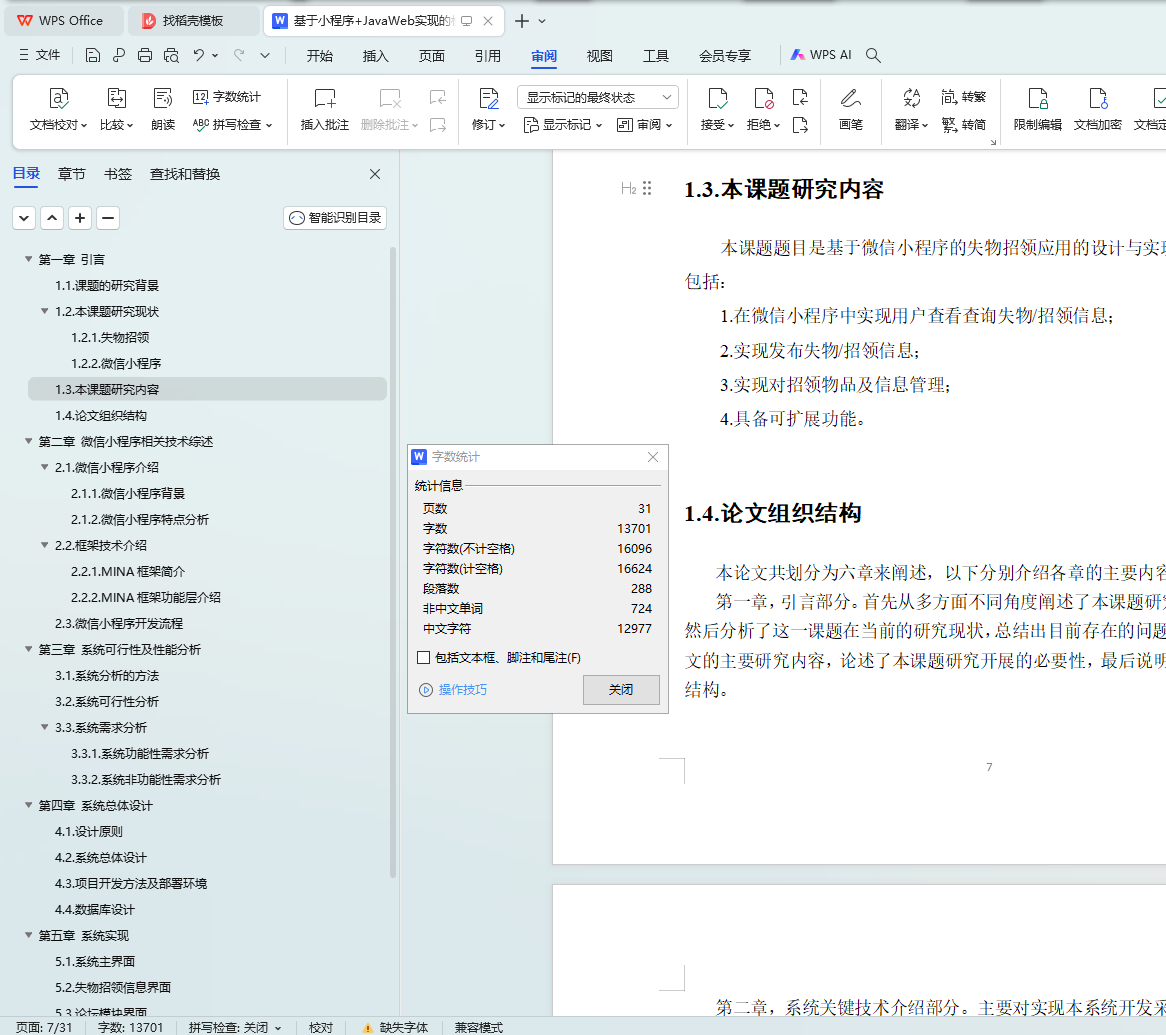基于小程序+JavaWeb实现的校园失物招领小程序平台设计
摘 要
随着互联网的普及和移动设备的广泛使用,人们越来越依赖数字化服务来解决生活中的各种问题。在校园内,失物招领是一个常见的问题,但传统的失物招领方式往往效率低下,信息传播范围有限。为了解决这一问题,我们提出了基于小程序+JavaWeb实现的校园失物招领小程序平台的设计与实现。
本文介绍了基于小程序+JavaWeb实现的校园失物招领小程序平台的设计与实现。该平台采用前端微信web开发者工具实现,后端使用JavaWeb和MySQL技术,通过Eclipse软件进行开发和Tomcat服务器进行部署。该平台为校园内的师生提供了一个便捷的失物招领平台,帮助大家找回丢失的物品,同时也为失主和捡到者提供了一个信息交流的渠道。本文详细阐述了该平台的设计思路、技术实现和功能特点,并给出了相应的代码示例和测试结果。
关键词:校园失物招领;小程序;JavaWeb;MySQL;Eclipse;Tomcat;微信web开发者工具
ABSTRACT
With the popularity of the Internet and the widespread use of mobile devices, people increasingly rely on digital services to solve various problems in their lives. Lost and found information is a common problem on campus, but the traditional lost and found approach is often inefficient and has limited information dissemination scope. In order to solve this problem, we propose the design and implementation of the campus lost and found small program platform based on small program + JavaWeb implementation.
This paper introduces the design and implementation of the campus lost and found small program platform based on small program + JavaWeb. The platform is implemented by front-end wechat web developer tools, and the back-end uses JavaWeb and MySQL technology, development through Eclipse software and Tomcat server deployment. The platform provides a convenient platform for teachers and students on the campus, to help them find the lost items, but also provides a channel for the owners and the finder to exchange information. This paper details the design ideas, technical implementation and functional characteristics of the platform, and gives the corresponding code examples and test results.
Key words: campus lost and found; small program; JavaWeb; MySQL; Eclipse; Tomcat; wechat web developer tool
目 录
第一章 引言
1.1. 课题的研究背景
1.2. 本课题研究现状
1.2.1. 失物招领
1.2.2. 微信小程序
1.3. 本课题研究内容
1.4. 论文组织结构
第二章 微信小程序相关技术综述
2.1. 微信小程序介绍
2.1.1. 微信小程序背景
2.1.2. 微信小程序特点分析
2.2. 框架技术介绍
2.2.1. MINA框架简介
2.2.2. MINA框架功能层介绍
2.3. 微信小程序开发流程
第三章 系统可行性及性能分析
3.1. 系统分析的方法
3.2. 系统可行性分析
3.3. 系统需求分析
3.3.1. 系统功能性需求分析
3.3.2. 系统非功能性需求分析
第四章 系统总体设计
4.1. 设计原则
4.2. 系统总体设计
4.3. 项目开发方法及部署环境
4.4. 数据库设计
第五章 系统实现
5.1. 系统主界面
5.2. 失物招领信息界面
5.3. 论坛模块界面
5.4. 公告模块界面
5.5. 失物发布模块界面
第六章 系统测试
6.1. 测试的目的
6.2. 系统测试的方法
参考文献
